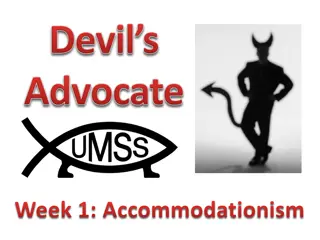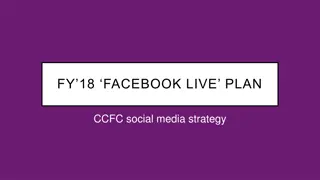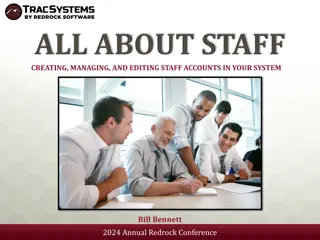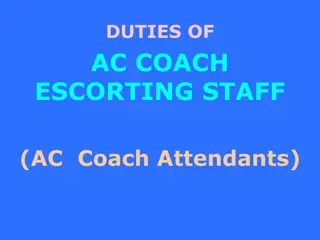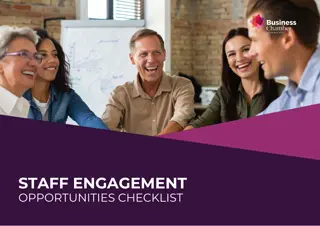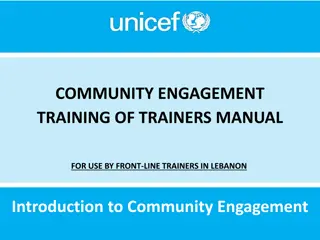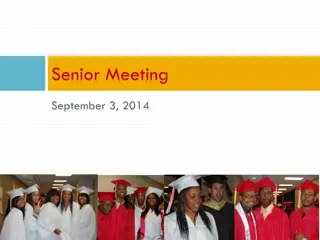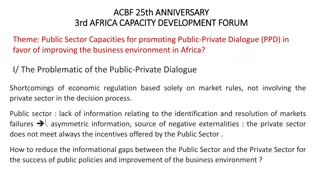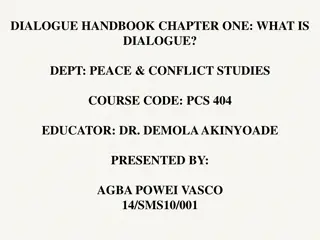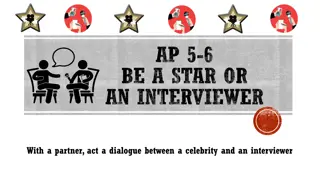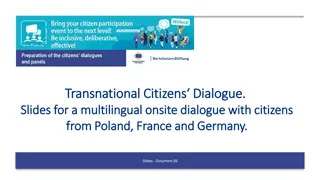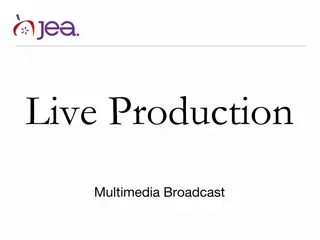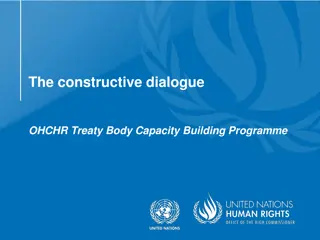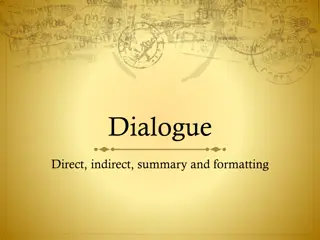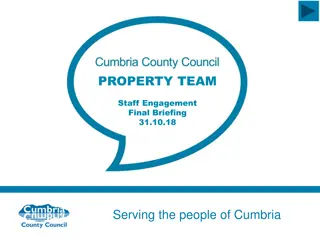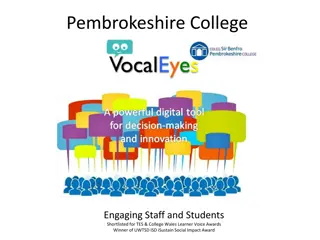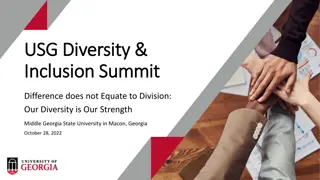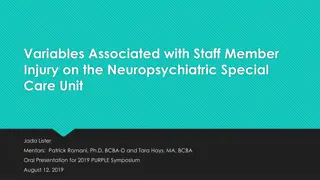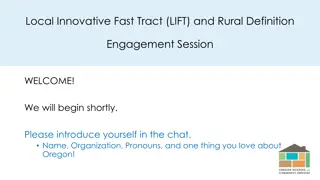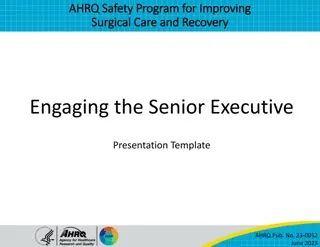Exploring Dialogue and Community Engagement in "Dialoguing Where We Live" Senior Staff Training
This event titled "Dialoguing Where We Live: Learning From Many Voices" provides insights on fostering dialogue, amplifying voices, and promoting community engagement. The training agenda includes key facilitation concepts, interactive activities like Kahoot, and discussions on important concepts surrounding debate, discussion, and dialogue. The emphasis is on encouraging diverse voices to be heard and valued in creating impactful dialogues within the community.
Download Presentation

Please find below an Image/Link to download the presentation.
The content on the website is provided AS IS for your information and personal use only. It may not be sold, licensed, or shared on other websites without obtaining consent from the author. Download presentation by click this link. If you encounter any issues during the download, it is possible that the publisher has removed the file from their server.
E N D
Presentation Transcript
DIALOGUING WHERE WE LIVE: Learning From Many Voices (Part I) Presented by: Chelsea Appiah Julius W. Mayo III
DIALOGUING WHERE WE LIVE (PART I) VOICES SENIOR STAFF TRAINING 2018 Agenda Welcome Getting Started Important Concepts Key Facilitation Information What s Next 2
DIALOGUING WHERE WE LIVE (PART I) VOICES SENIOR STAFF TRAINING 2018 GETTING STARTED 3
DIALOGUING WHERE WE LIVE (PART I) VOICES SENIOR STAFF TRAINING 2018 We care about student success. -Ohio State Residence Life Motto 4
DIALOGUING WHERE WE LIVE (PART I) VOICES SENIOR STAFF TRAINING 2018 Check out the new website at https://u.osu.edu/reslifedialogue/ : 5
DIALOGUING WHERE WE LIVE (PART I) VOICES SENIOR STAFF TRAINING 2018 Let s Get started with an icebreaker Image result for this is me A Kahoot! is a game show experience designed to help start our discussion on community dialogues. If you are able, use your electronic device (such as a laptop, tablet or phone) to log into: https://kahoot.it. Type in the Game Pin shown on the screen, and enter your contestant name. This is Me From The Greatest Showman Soundtrack Performed by Keala Settle Written by: Benj Pasek and Justin Paul We have a little intro music from the film The Greatest Showman to get you excited about our topic today. https://play.kahoot.it/#/k/b8a5121a-2e19- 4ca6-ac32-d3a0b9734220 6
DIALOGUING WHERE WE LIVE (PART I) VOICES SENIOR STAFF TRAINING 2018 Not unlike the song, dialogue is about amplifying voices that might otherwise be silenced. 7
DIALOGUING WHERE WE LIVE (PART I) VOICES SENIOR STAFF TRAINING 2018 IMPORTANT CONCEPTS 8
DIALOGUING WHERE WE LIVE (PART I) VOICES SENIOR STAFF TRAINING 2018 Is it Debate, Discussion or Dialogue? Based on the following clues, let s figure out what is being described used certain characteristics and desired outcomes. 9
DIALOGUING WHERE WE LIVE (PART I) VOICES SENIOR STAFF TRAINING 2018 Format #1 May be between two people or among many A generic term for talking together. Back and forth exchange of information, stories, experiences and viewpoints. May focus on a topic, theme, idea, problems, issues, etc., may be broad or focused. Usually implies participants are not adversarial or competing. Desired Outcome: Allows people to talk together about something without desiring any particular outcome from the conversation. 10 Is it Debate, Discussion or Dialogue?
DIALOGUING WHERE WE LIVE (PART I) VOICES SENIOR STAFF TRAINING 2018 Format #2 Has winners and losers. Searches for glaring differences. Features critiques of the other side s position. The goal is winning. Defends assumptions of truth. Seeks a conclusion or vote that ratifies a position. Desired Outcome: A position or course of action is being advocated and winning is the goal. Is it Debate, Discussion or Dialogue? 11
DIALOGUING WHERE WE LIVE (PART I) VOICES SENIOR STAFF TRAINING 2018 Format #3 Goal is a shared understanding of the issue/problem. Examining costs and consequences of even most favored approaches. About learning. Searching for strengths and value in others positions. Discovering new opinions, not seeking closure. Desired Outcome: A decision or criteria for a decision, about the best ways(s) to approach an issue or problem is generated. 12 Is it Debate, Discussion or Dialogue?
DIALOGUING WHERE WE LIVE (PART I) VOICES SENIOR STAFF TRAINING 2018 Building Blocks of Dialogue Suspending Judgments. Deep Listening. Identifying Assumptions. Reflection and Inquiry. 13
DIALOGUING WHERE WE LIVE (PART I) VOICES SENIOR STAFF TRAINING 2018 KEY FACILITATION INFORMATION 14
DIALOGUING WHERE WE LIVE (PART I) VOICES SENIOR STAFF TRAINING 2018 Before the Dialogue (Mindset) Explore the Five Components of Cultural Competence: Self Awareness (including implicit biases). Understanding and Valuing Others. Knowledge of Social Inequities. Skills to interact effectively with a diversity of people in different contexts. Skills to foster equity and inclusion. 15
DIALOGUING WHERE WE LIVE (PART I) VOICES SENIOR STAFF TRAINING 2018 Before the Dialogue (Mindset) What it means to be a Neutral facilitator: Explains his/her role. Sets a relaxed and welcoming tone. Introduces themselves, but does not share personal opinions or push an agenda. Does not take sides. Makes everyone feel that their opinions are valid and welcome. Does not use their personal experiences to make a point to get people talking. Uses probing questions to deepen the discussion. Brings up issues that the participants have not mentioned. Reminds participants of comments they shared in earlier sessions. 16
DIALOGUING WHERE WE LIVE (PART I) VOICES SENIOR STAFF TRAINING 2018 Before the Dialogue The role of the facilitator: Model behavior we want to see in our groups. Honor and encourage dialogue. Be transparent as possible about the facilitation process. Provide and receive constructive feedback with co-facilitator and group. Transform critical incidents into teachable moments. Be wiling to take risks, make mistakes, be vulnerable. We don t expect group members to do anything we are not willing to do. 17
DIALOGUING WHERE WE LIVE (PART I) VOICES SENIOR STAFF TRAINING 2018 Before the Dialogue (Format) Dialogue is a three step process: Brainstorm Develop Action Ideas Prioritize A Dialogue Circle completes this process by using multiple Two-hour sessions to work toward a desired outcome. This process is very similar to the Challenge-Based Learning Approach. 18
DIALOGUING WHERE WE LIVE (PART I) VOICES SENIOR STAFF TRAINING 2018 Before the Dialogue (Format) A Dialogue Circle: Is a small, diverse group of 8-12 people. Sets its own ground rules. This helps the group share responsibility for the quality of the discussion. Is led by an impartial facilitator who helps manage the discussion. The facilitator is not there to teach the group about the issue. Begins with people getting to know one another, then helps the group look at a problem from many points of view. Next, the group explores possible solutions. Finally, they develop ideas for action and change. 19
DIALOGUING WHERE WE LIVE (PART I) VOICES SENIOR STAFF TRAINING 2018 Before the Dialogue (Format) A Typical Two-hour Session: Welcome and Introductions. Ground Rules. Dialogue and Deliberations. Summary and Common Ground. Evaluation and Wrap-up. . 20
DIALOGUING WHERE WE LIVE (PART I) VOICES SENIOR STAFF TRAINING 2018 Before the Dialogue (Set-up) Materials/ Set-up/ Information Nametags. Workshop Prep Work Packet. Provide group with copies of the handouts relevant to the discussion. Inform participants of the location of restrooms, water fountains and vending machines (if necessary). Projector. Screen/white wall. Markers. Dry-erase board/ Large pads and easels for note taking. 21
DIALOGUING WHERE WE LIVE (PART I) VOICES SENIOR STAFF TRAINING 2018 Starting the Dialogue (Agenda) Welcome (Agenda and Overview). Taking the Pulse. Ground Rules. Dialogue and Deliberation. Summary and Common Ground. Evaluation and Wrap Up. 22
DIALOGUING WHERE WE LIVE (PART I) VOICES SENIOR STAFF TRAINING 2018 Starting the Dialogue (Agenda and Overview) Agenda Review agenda for the session Overview: Today we re talking about ________ and why it is important for meeting our Residence Life goal of helping students succeed. This process brings together many people from different backgrounds to help address this issue. 23
DIALOGUING WHERE WE LIVE (PART I) VOICES SENIOR STAFF TRAINING 2018 Starting the Dialogue (Taking the Pulse of the Group) Introductions: Name How are you feeling today about this process? Have you been part of a dialogue before? What do you hope results from today s dialogue? 24
DIALOGUING WHERE WE LIVE (PART I) VOICES SENIOR STAFF TRAINING 2018 Starting the Dialogue (Sample Ground Rules) Speak from personal experiences and avoid generalizations about groups of people. Respect Confidentiality. Share Air time. Listen respectfully to different perspectives. Controversy with civility. Own your intentions and your impact. We share responsibility for making the conversation productive. 25
DIALOGUING WHERE WE LIVE (PART I) VOICES SENIOR STAFF TRAINING 2018 The Art of Recording What to do: Capture big ideas and themes, not every word. Use the words of the speaker as closely as possible without altering the meaning. Check to see that notes are correct. Write neatly and number each page at the top. Use dark green, brown blue and purple markers first, use black sparingly. Red, yellow, and orange are for highlighting. Be low key, and aware of when it might not be appropriate to record what is said. 26
DIALOGUING WHERE WE LIVE (PART I) VOICES SENIOR STAFF TRAINING 2018 The Art of Recording (Continued) What to do: Create a Parking Lot sheet for ideas that come up in the discussion that can be revisited later. Post the ground rules each time, and add any sheets of paper that the group would like to refer back to later. Why Note taking? Helps group stay on track. Creates group memory. Captures group wisdom and themes. Can be used to create a community plan of action. 27
DIALOGUING WHERE WE LIVE (PART I) VOICES SENIOR STAFF TRAINING 2018 Tips for Facilitators Highlights Be familiar with the discussion materials. Have questions in mind or written down to guide the dialogue. Don t allow the group to turn to you for the answers. Keep track of who has spoken and who hasn t Keep careful track of time. Try to involve everyone; don t let anyone take over the conversation. 28
DIALOGUING WHERE WE LIVE (PART I) VOICES SENIOR STAFF TRAINING 2018 Facilitation Challenges (What to do) Review Workshop Prep Work Packet for working with: Shy Participants. An aggressive or talkative person who dominates the conversation. Someone who puts forward false information. Tension in the group. Wandering off topic. Lack of interest in the topic. Managing conflict. When someone gets emotional (crying). Working with Cultural Differences. 29
DIALOGUING WHERE WE LIVE (PART I) VOICES SENIOR STAFF TRAINING 2018 Fishbowl Exercise (Brainstorming) Let s Observe: For the next 10 minutes, we ll need 6-8 volunteers to serve as dialogue participants in a Brainstorming dialogue. Please watch for a wide range of facilitation approaches including: o Involving everyone in the conversation. o Setting a welcoming tone. o Moving the conversation along. o Handling difficult situations. o Maintaining a neutral role. 30
DIALOGUING WHERE WE LIVE (PART I) VOICES SENIOR STAFF TRAINING 2018 Fishbowl Exercise (Brainstorming) Dialogue Topic: One of the goals of the Inclusive Excellence model is to uncover inequities in student success (including underlying causes for differing challenges for diverse groups of students). What approaches do we currently use in Residence Life that could be enhanced to be more inclusive in terms of accomplishing this goal for a broader range of students especially in terms of race, gender, sexual orientation and socioeconomic status? 31
DIALOGUING WHERE WE LIVE (PART I) VOICES SENIOR STAFF TRAINING 2018 Fishbowl Exercise (Brainstorming) Discussion: What facilitation techniques did you notice? What did the facilitator do to involve everyone in the conversation? Was there a particular intervention you noticed? Why? Did anything go wrong? What else could the facilitator have done? Was there any time the facilitator wasn t neutral? What did you like best about what the facilitator did? Is there anything you would change? 32
DIALOGUING WHERE WE LIVE (PART I) VOICES SENIOR STAFF TRAINING 2018 WHAT S NEXT 33
DIALOGUING WHERE WE LIVE (PART I) VOICES SENIOR STAFF TRAINING 2018 Tomorrow s Dialogue Workshop On Thursday, July 26, 2018 we will be going through a workshop experience that will include dialogue format that you will use with your staff this year. During the workshop groups of 6-8 people will be generating new strategies for ensuring inclusive experiences within the fictional Residence Hall community. We will be using a Brainstorming session that will begin with dialogue on the individual identities of the participants In actual practice, Residence Hall will be your specific residential community here at Ohio State Additional materials will be provided during the workshop on how to use the dialogue process for working with paraprofessionals. 34
DIALOGUING WHERE WE LIVE (PART I) VOICES SENIOR STAFF TRAINING 2018 Welcome to Residence Hall During the first six weeks, Residence Hall will need to complete a Brainstorming staff dialogue to determine what practices going on in the hall could be enhanced through Inclusive Excellence practices. For this scenario you will be playing either a Paraprofessional or one of the senior staff members in this community who is charged with working toward this goal. In your small group, select one member to serve as a facilitator and others to serve as participants. 35
DIALOGUING WHERE WE LIVE (PART I) VOICES SENIOR STAFF TRAINING 2018 Prep Work For the workshop on Thursday you will need to do the following: Be prepared to take on an assigned role as a fictional paraprofessional (don t worry, you don t have to be an expert actor!) Be prepared to discuss the following during the dialogue: What are the major inclusion issues such as race, gender, sexual orientation, socioeconomic status, nationality that should be considered when exploring ways to create learning environments that are shaped by inclusive excellence. Review Sections three and four of the hardcopy or online version (https://u.osu.edu/reslifedialogue) of the Workshop Prep Work Packet for recommendations for facilitating the dialogue on Thursday. All members of the group will have a role in the experience whether it be a facilitator or participant. 36
DIALOGUING WHERE WE LIVE (PART I) VOICES SENIOR STAFF TRAINING 2018 Questions 37
DIALOGUING WHERE WE LIVE (PART I) VOICES SENIOR STAFF TRAINING 2018 Sources Bruns, C. (2018) Empathy vs. sympathy. What s the difference? Retrieved from http://www.catherinebruns.com/empathy-vs-sympathy-whats-the-difference/. Campbell, S. (2008) A guide for training public dialogue facilitators. Retrieved from http://www.intergroupresources.com/rc/A%20Guide%20for%20Training%20Public% 20Dialogue%20Facilitators.pdf. Sokoloff, H., Dillon, D., Dineen, P. (2016). Debate, discussion, deliberative dialogue. [Handout]. Retrieved from https://www.nifi.org/en/catalog/product/debate- discussion-deliberative-dialogue-3-ds-harris-sokoloff-david-dillon-and-patty. 38 Spring, J & Irving, C. (2018). Intergroup dialogue, presented at NCORE, 2018, New
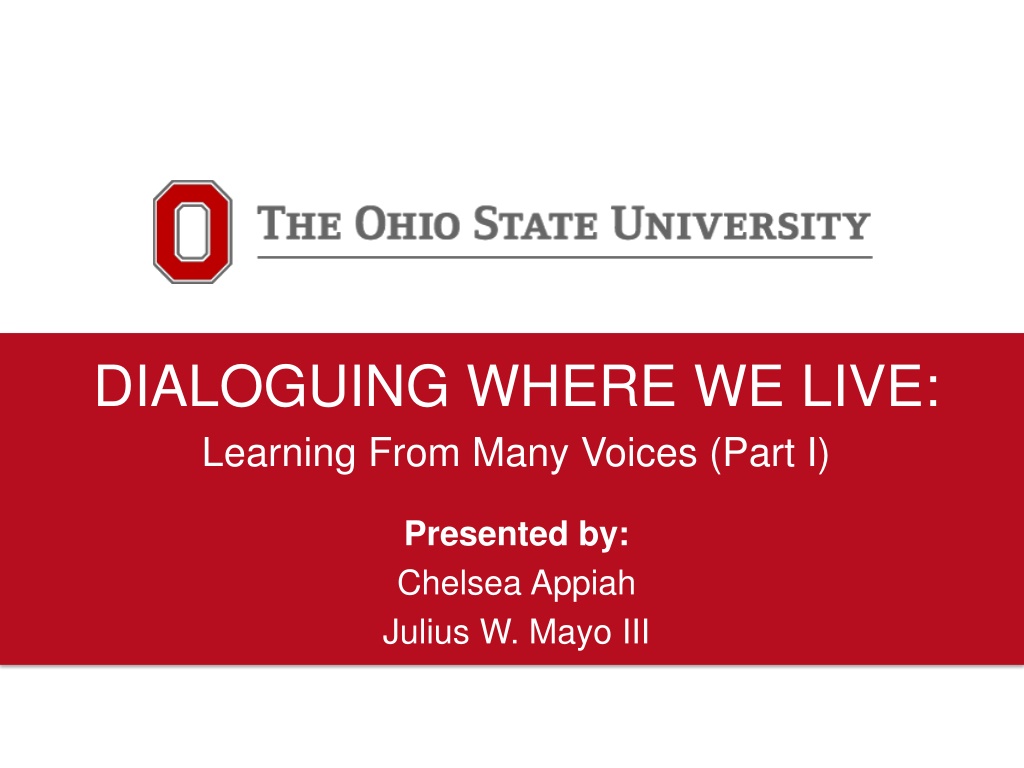

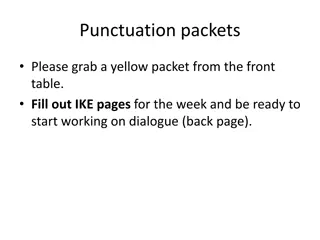
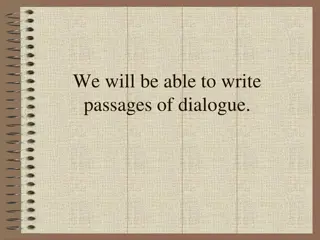
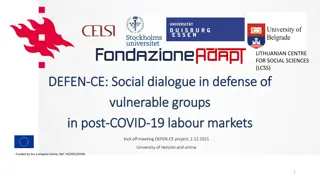

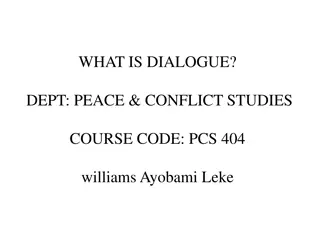
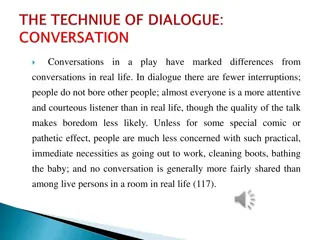
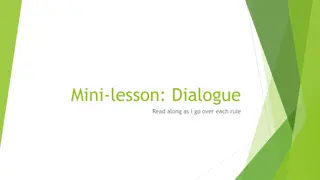
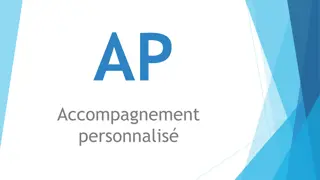
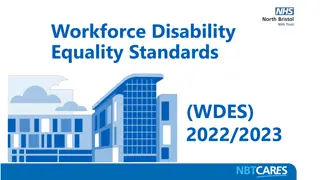
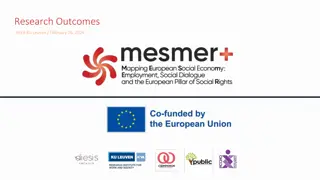
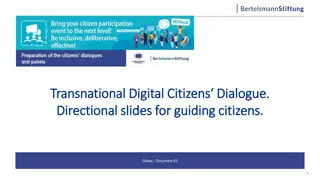
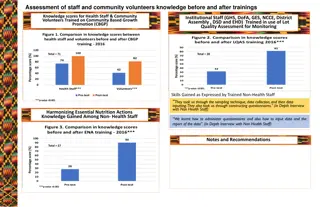

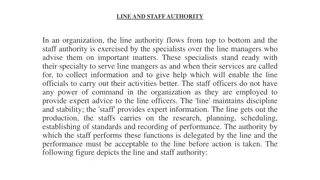
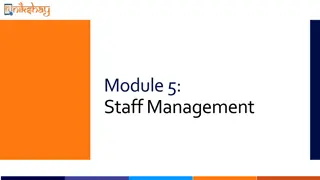
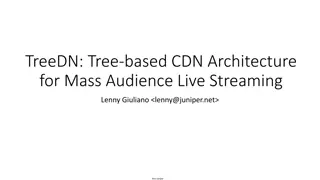
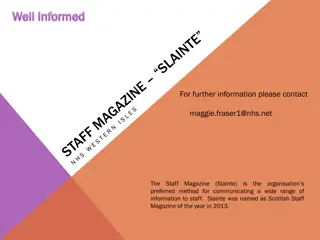


![Explore the Exciting World of Live Music Through [Insert Town/City] Census!](/thumb/148894/explore-the-exciting-world-of-live-music-through-insert-town-city-census.jpg)
